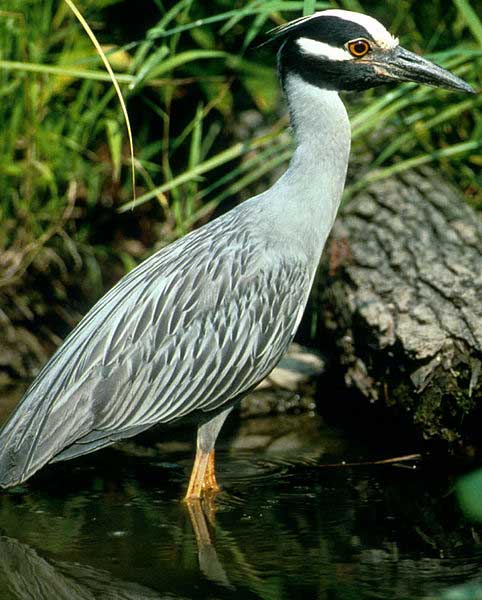Nyctanassa violacea (*) Cladus: Eukaryota Name Nyctanassa violacea (Linnaeus, 1758) Vernacular names Reference Systema Naturae ed.10 p.143 The Yellow-crowned Night Heron (Nyctanassa violacea, formerly placed in the genus Nycticorax), also called the American Night Heron or squawk, is a fairly small heron, similar in appearance to the Black-crowned Night Heron. It is found throughout a large part of the Americas, especially (but not exclusively) in warmer coastal regions; an example occurrence is the Petenes mangroves of the Yucatan. A related heron, the Bermuda Night Heron, was endemic to Bermuda, but became extinct following human colonisation. Description Adults are about 61 cm long and weigh 625 g. They have a white crown and back with the remainder of the body grayish, red eyes and short yellow legs. They have a white stripe below the eye. Juveniles resemble young Black-crowned Night-Herons, being mainly brown flecked with white or gray. Behavior In warmer locations, some are permanent residents; others migrate to Central America and the West Indies. They may occasionally wander north to the lower Great Lakes or Ontario after the breeding season. Feeding
Breeding Their breeding habitat is swamps and marshes from the eastern United States to north-eastern South America. They often nest in colonies, usually on platforms of sticks in trees or shrubs . they lay 3–5 pale blue-green eggs. References * BirdLife International (2008). Nyctanassa violacea. In: IUCN 2008. IUCN Red List of Threatened Species. Downloaded on 4 February 2009. Database entry includes justification for why this species is of least concern. Source: Wikipedia, Wikispecies: All text is available under the terms of the GNU Free Documentation License |
|

